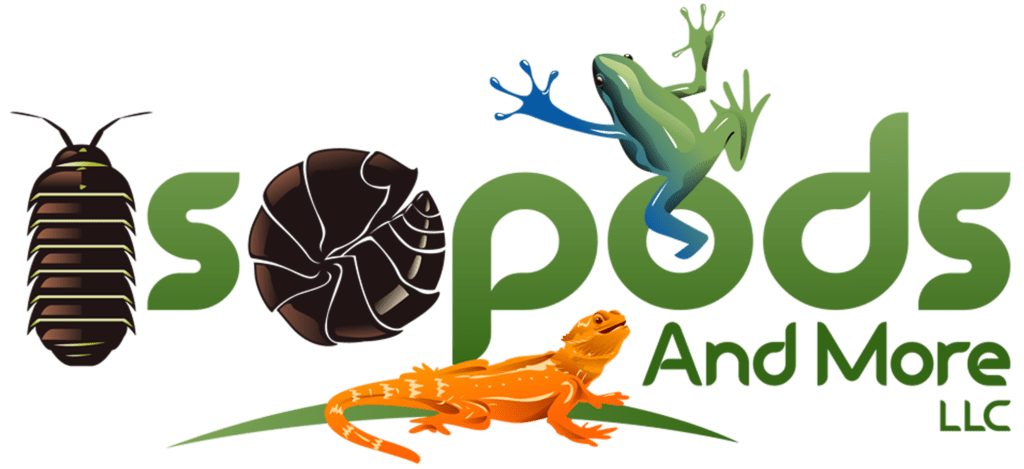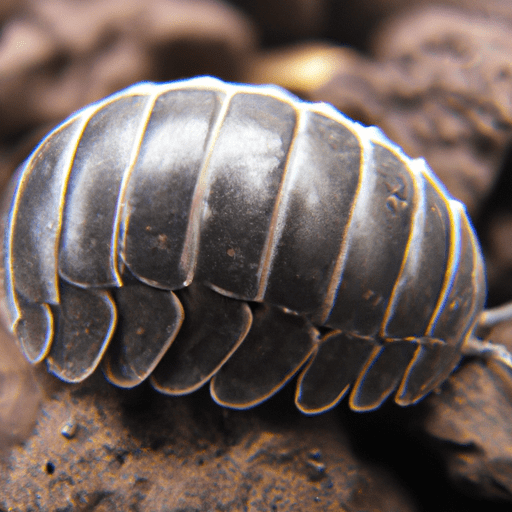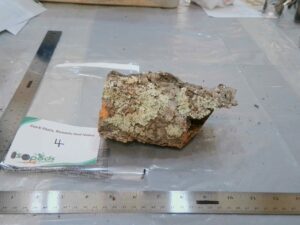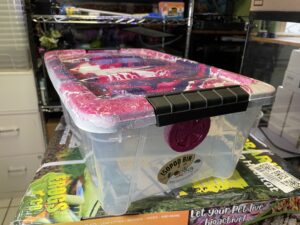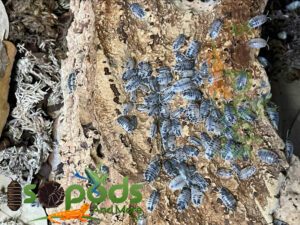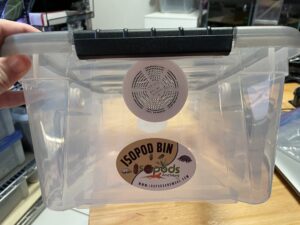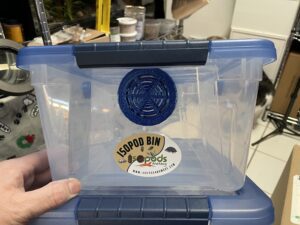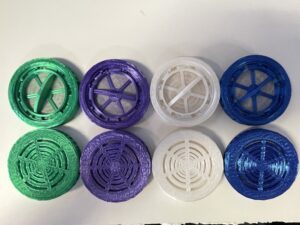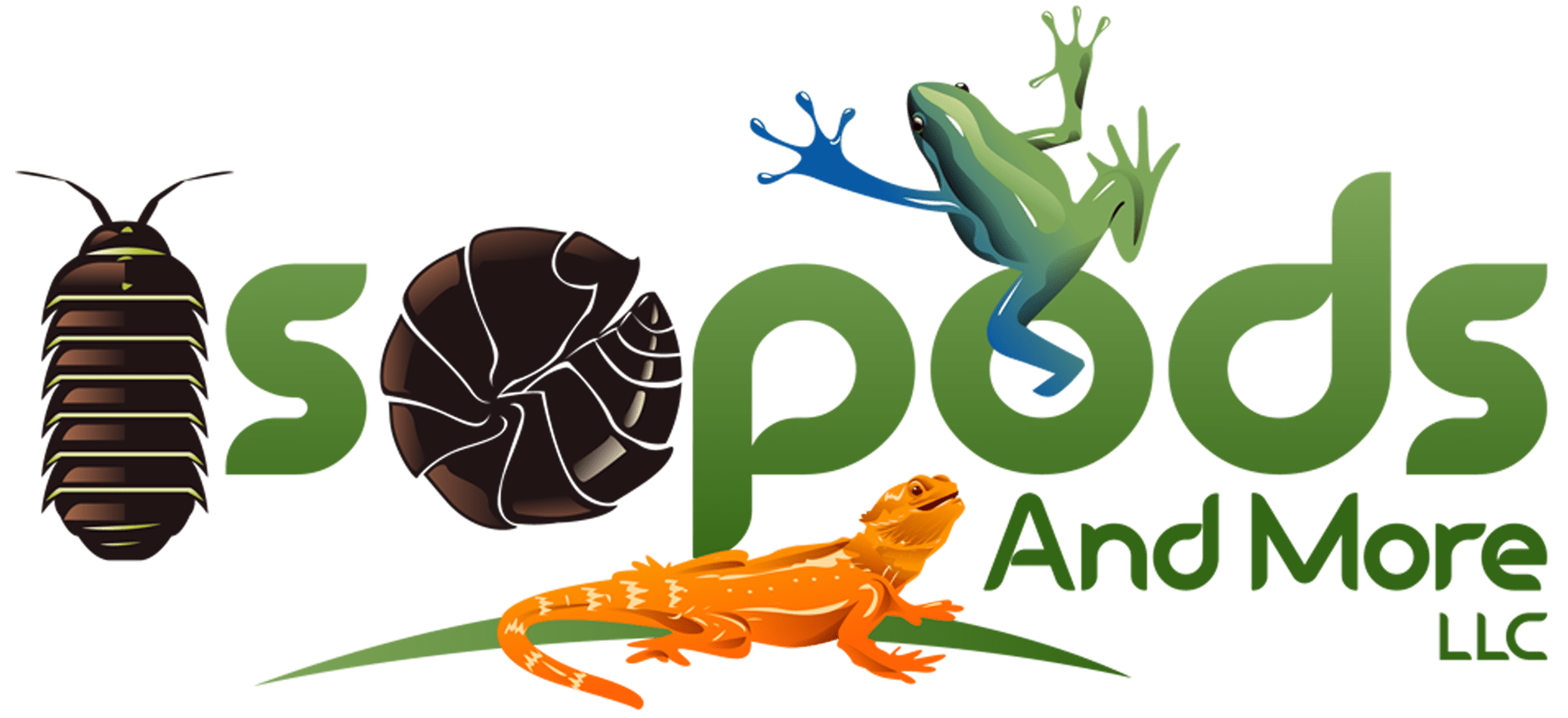Isopods may not be the first creatures that come to mind when thinking of pets, but they are gaining popularity among savvy pet enthusiasts. These tiny crustaceans, also known as woodlice or pill bugs, are fascinating creatures that can thrive in bioactive enclosures. If you’re new to the world of isopod care and are curious to learn more, this beginner’s guide will provide you with all the essential information you need to get started. From understanding the unique characteristics of isopods to creating the ideal environment for them, you’ll soon discover the joys of caring for these mesmerizing creatures.
Choosing the Right Isopod Species
When it comes to choosing the right isopod species, it’s important to do your research and consider a few factors before making a decision. Isopods come in a wide variety of species, each with its own unique characteristics and care requirements. By taking the time to research and understand these species, you can ensure that you select the best fit for your needs and preferences as an isopod keeper.
Researching Isopod Species
To begin your journey into isopod keeping, it’s essential to educate yourself about the different species available. Spending some time researching the characteristics, behaviors, and habitat requirements of various isopods will provide you with valuable insights. Look for information on their size, coloration, humidity and temperature preferences, as well as their dietary needs. By gaining a solid understanding of each species, you can make a well-informed decision that aligns with your goals as an isopod keeper.
Considerations for Beginner Isopod Keepers
As a beginner isopod keeper, it is advisable to start with species that are known for being easy to care for. Some popular choices among beginners include Armadillidium species, such as Armadillidium vulgare (commonly known as the pill bug or roly-poly). These isopods are highly adaptable, have relatively simple care requirements, and are generally hardy. Another suitable species for beginners is Porcellio scaber, commonly referred to as the rough woodlouse or sow bug. These isopods are also quite resilient and can thrive in a variety of environments.
Setting Up a Suitable Enclosure
Creating a suitable enclosure is crucial for the well-being and comfort of your isopods. There are a few key factors to consider when setting up their living space to ensure they have the best possible environment to thrive in.
Selecting an Enclosure
When choosing an enclosure for your isopods, it’s important to consider their size and the specific needs of the species you’ve selected. Isopods generally require spacious enclosures with enough surface area for them to roam, hide, and breed. Glass or plastic terrariums with secure lids often make excellent enclosures for isopods, as they provide ample ventilation while maintaining a controlled environment.
Providing Adequate Substrate
Isopods are burrowing creatures, so providing them with a suitable substrate is essential. Opt for a substrate that can hold moisture well, such as coconut fiber or a mixture of coco fiber and sphagnum moss. This type of substrate not only retains moisture but also provides a naturalistic and comfortable environment for your isopods. Ensure that the substrate is deep enough to allow for burrowing, as this is a natural behavior for these fascinating creatures.
Creating Optimal Environmental Conditions
Maintaining optimal environmental conditions is vital for the health and well-being of your isopods. This includes providing suitable humidity levels, temperature range, and lighting.
Feeding Isopods
Isopods are detritivores, meaning they primarily feed on decaying organic matter. As an isopod keeper, it is your responsibility to ensure they receive a well-balanced and nutritious diet.
Nutritional Requirements
Isopods require a varied diet that mimics their natural food sources. This includes a combination of leaf litter, decaying wood, fruits, vegetables, and even calcium-rich foods. These nutrients are essential for their growth, reproduction, and overall health. By providing a diverse range of food items, you can ensure that your isopods are getting all the necessary nutrients they require.
Best Foods for Isopods
Some ideal food choices for isopods include leafy greens, such as spinach and kale, as well as fruits like apples and bananas. Providing them with decaying wood and leaf litter also serves as a valuable food source. Additionally, calcium-rich foods such as cuttlebone or crushed eggshells are important for their exoskeleton development. It is important to regularly monitor and replace the food to prevent mold or spoilage.
Feeding Frequency and Quantity
Isopods have slow metabolisms and do not require daily feedings. Depending on the size of your colony, feeding them every two to four days is typically sufficient. Pay attention to their eating habits and adjust the feeding frequency accordingly. It’s important not to overfeed, as excess food can lead to mold growth and compromise the enclosure’s overall cleanliness.
Maintaining Humidity Levels
Understanding and maintaining appropriate humidity levels is crucial for the health and well-being of your isopods. Isopods have a high moisture requirement, as it is essential for their survival and reproduction.
Understanding Isopod’s Moisture Needs
Isopods breathe through specialized structures known as pleopods, which require a certain level of humidity to remain functional. Inadequate humidity levels can lead to dehydration and ultimately harm the isopods’ overall health. It is important to maintain a consistently moist environment for them to thrive.
Methods to Maintain Humidity
There are several methods you can employ to maintain optimal humidity levels within the enclosure. Regularly misting the enclosure with dechlorinated water can help increase humidity. Using a humidifier or placing a water dish in the enclosure can also provide a consistent source of moisture. Additionally, adding moisture-holding materials such as sphagnum moss or moistened substrate can help maintain the desired humidity levels. Regular monitoring of humidity levels using a hygrometer is advised to ensure the conditions remain within the appropriate range.
Temperature Requirements
Temperature plays a crucial role in the overall health and activity of your isopods. Providing them with a suitable temperature range is essential for their well-being and reproductive success.
Ideal Temperature Range
Most isopod species thrive in temperatures between 70°F (21°C) and 80°F (27°C). However, it’s important to note that different species may have specific temperature preferences. In order to replicate their natural habitat, it’s advisable to maintain the temperature within the range that suits the particular species you are keeping. Consistency in temperature is also key, as abrupt fluctuations can stress the isopods.
Heating and Cooling Methods
Maintaining a stable temperature within the enclosure can be achieved through various methods. Using a reptile heat mat or heat tape placed underneath the enclosure can provide gentle and consistent heat. Alternatively, a low-wattage heat lamp or ceramic heat emitter can be used to warm the enclosure as needed. In warmer climates, cooling the enclosure may be necessary, and this can be achieved by using a small fan or keeping the enclosure in a cooler area of the house.
Lighting for Isopods
While lighting is not as critical for isopods as it is for other reptiles or amphibians, providing some form of lighting helps regulate their natural circadian rhythm and can enhance their overall well-being.
Natural Lighting vs. Artificial Lighting
Isopods are typically nocturnal creatures and tend to be more active during the night. By providing them with a natural light-dark cycle, you can help mimic their natural habitat. Placing the enclosure in a room with access to natural daylight can provide them with the required lighting. However, if natural lighting is not sufficient or available, providing a low-wattage, full-spectrum LED or fluorescent light for a set period during the day can help simulate natural lighting conditions.
Recommended Light Duration
It’s important to strike a balance when it comes to light duration. Providing around 8-12 hours of light per day is generally sufficient. This allows them to have both light and dark periods, which helps maintain their natural behavior patterns. Monitoring their activity levels and adjusting the light duration accordingly can help ensure their well-being and comfort.
Cleaning and Maintaining the Enclosure
Maintaining a clean and hygienic enclosure is crucial for the health and longevity of your isopods. Regular cleaning and maintenance routines should be implemented to ensure a suitable living environment for your isopods.
Spot-Cleaning
Spot-cleaning involves regularly removing any uneaten food, waste, or dead plant matter from the enclosure. This helps prevent the accumulation of debris or organic material that can attract pests or lead to unpleasant odors. By conducting regular spot-cleaning, you can promote a clean and healthy environment for your isopods.
Deep-Cleaning
Deep-cleaning is a more thorough process that involves removing the isopods temporarily while cleaning the entire enclosure. This typically includes replacing the substrate, cleaning the enclosure walls, and disinfecting any decor or hiding places. Deep-cleaning should be done periodically, ideally every few months, to ensure a fresh and clean habitat for your isopods.
Preventing Odor and Mold
Maintaining proper ventilation and carefully monitoring the moisture levels in the enclosure can help prevent the development of unpleasant odors or mold. If you detect any foul odors or notice mold growth, you should address the issue promptly. Adjusting the humidity levels, removing excess food or decaying matter, and ensuring proper airflow can help mitigate these issues.
Breeding Isopods
If you’re interested in breeding isopods, it’s important to understand the unique requirements and behaviors associated with their reproductive process. Creating suitable breeding conditions and providing proper care for the offspring are essential for successful breeding endeavors.
Identifying Male and Female Isopods
When it comes to breeding isopods, it’s crucial to be able to differentiate between males and females. Male isopods typically have a more elongated and pronounced last pair of swimmerets, while females have a broader and more rounded structure. Familiarize yourself with the physical characteristics of the species you are breeding to accurately identify males and females.
Creating Suitable Breeding Conditions
To encourage successful breeding, it’s important to create optimal conditions within the enclosure. Providing adequate hiding places, such as cork bark or leaf litter, allows the isopods to retreat during the breeding process. Maintaining appropriate temperature and humidity levels, as well as providing a varied and nutritious diet, can also promote breeding behavior.
Caring for Isopod Offspring
Once the isopods have bred and the offspring are born, it’s important to provide suitable care for the young. Consider separating the adult isopods from the offspring to prevent any accidental harm. Additionally, ensuring a consistent and appropriate diet, temperature, and humidity for the young is crucial for their growth and development. As they mature, gradually reintroduce them to the adult enclosure, taking care to monitor any interactions and ensure their safety.
Common Health Issues and Care Challenges
While isopods are generally hardy creatures, they can occasionally encounter health issues or care challenges. Being aware of these potential issues and knowing how to address them can help you provide the best possible care for your isopods.
Recognizing Signs of Illness
It’s important to observe your isopods closely and be vigilant for any signs of illness. Some common signs of illness in isopods include lethargy, loss of appetite, abnormal behavior, discoloration or deformities, and excessive molting difficulties. If you notice any of these symptoms, it’s advisable to consult with a veterinarian experienced in invertebrate care to properly diagnose and treat the issue.
Handling Parasitic Infestations
Occasionally, isopods can become hosts to various parasites, such as mites or nematodes. Regularly inspecting your isopods for any signs of parasites can help identify and address infestations promptly. Consult with a veterinarian knowledgeable in the treatment of isopod parasites for appropriate intervention and guidance.
Dealing with Overpopulation
In some cases, isopods may reproduce more rapidly than desired, leading to overpopulation within the enclosure. This can put strain on the available resources and may result in inadequate conditions for the isopods’ well-being. To control overpopulation, consider removing a portion of the isopods or setting up additional enclosures to accommodate the growing colony. Responsible management of population size is essential for the overall health and sustainability of your isopods.
Safety Precautions when Handling Isopods
When handling isopods, it’s important to take appropriate safety precautions to ensure both your safety and the well-being of the isopods.
Wearing Gloves and Protective Gear
Isopods may have sharp or rough edges on their bodies, which can cause minor scratches or irritation when handled. To protect your hands and minimize any potential injuries, it’s advisable to wear gloves when handling them. Additionally, using tweezers or a soft brush can help gently manipulate and move the isopods without direct contact.
Avoiding Harmful Substances
When cleaning or handling the enclosure, it’s important to avoid using any harmful substances that may be toxic to isopods. Chemical-based cleaning agents or pesticides can pose a significant risk to their health and can lead to illness or death. Instead, opt for natural, non-toxic cleaning solutions and materials that are safe for your isopods and the environment.
By following these safety precautions, you can ensure a positive and safe experience when interacting with your isopods.
In conclusion, caring for isopods involves understanding their unique characteristics and providing suitable conditions within the enclosure. By choosing the right isopod species, setting up a suitable enclosure, maintaining proper feeding, humidity, temperature, and lighting conditions, as well as taking appropriate safety precautions, you can create an ideal environment for your isopods to thrive. With proper research, care, and attention, you can enjoy a rewarding and fascinating experience as an isopod keeper.
